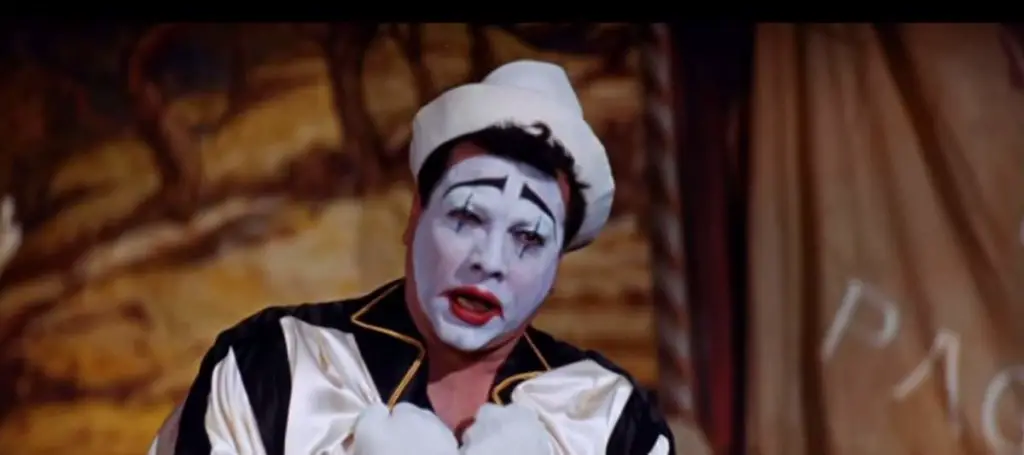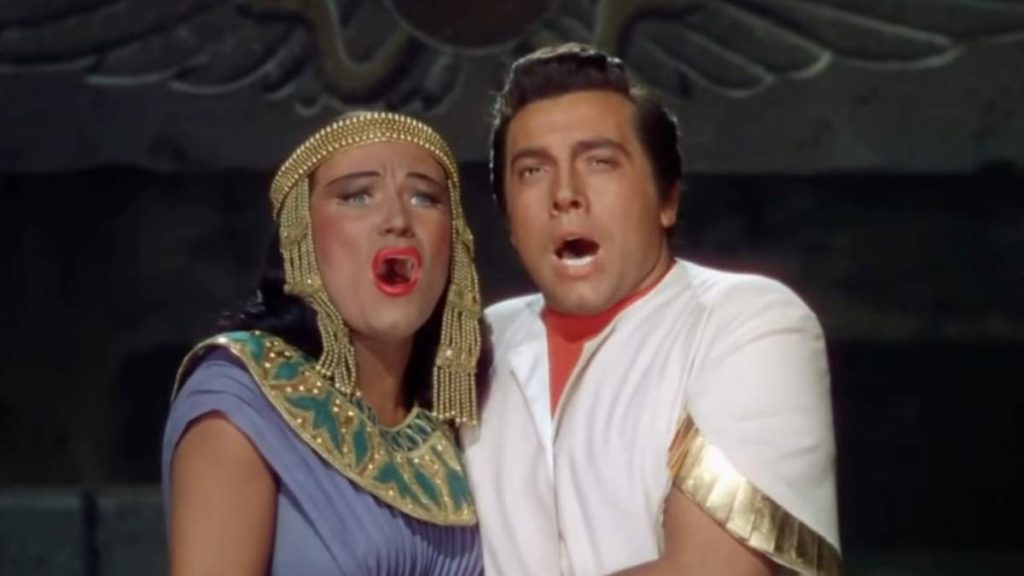The great American tenor and Hollywood film star of Italian origin, Mario Lanza sings “Vesti La Giubba”, a famous tenor aria from Ruggero Leoncavallo’s 1892 opera Pagliacci (Clowns). From the 1951 movie “The Great Caruso”.
Vesti la Giubba (Put on the costume)
“Vesti La Giubba,” one of the most famous arias in the operatic repertoire, is a highlight of Ruggero Leoncavallo’s opera “Pagliacci.” Premiered in 1892, “Pagliacci” is often hailed as a masterpiece of verismo, an operatic genre focusing on everyday life and emotions, particularly those of the lower classes. Legendary Italian tenor Enrico Caruso’s 1904 recording has sold more than one million copies, the first million-seller in history.
The aria is performed by the main character, Canio, a clown in a traveling commedia dell’arte troupe. “Vesti La Giubba” occurs at a crucial moment in the opera, at the end of the first act. Canio has just discovered the infidelity of his wife, Nedda, but must prepare to perform in a comedy as part of their troupe’s show. The aria captures his agony as he grapples with his personal heartbreak while needing to put on a cheerful face for the audience.
Musically, “Vesti La Giubba” is a masterful depiction of the character’s emotional turmoil. Leoncavallo employs a dramatic melody that powerfully conveys Canio’s anguish and despair. The aria starts with a somber, reflective mood as Canio contemplates his situation. The music then builds up to an intense climax, mirroring his growing emotional turmoil. This crescendo leads to the famous line, “Ridi, Pagliaccio” (Laugh, clown), where Canio resigns himself to hide his pain behind the clown’s smile.
The text of the aria adds to its emotional impact. The Italian title translates to “Put on the costume,” and the lyrics depict Canio’s struggle to reconcile his internal suffering with his professional role as a clown. The juxtaposition of his tragic reality with the comedic expectations of his audience makes the aria particularly poignant.
“Vesti La Giubba” is not only central to “Pagliacci” but also holds a significant place in the operatic canon. It is often cited as one of the most moving moments in opera, showcasing the singer’s ability to convey deep emotion. The aria requires a tenor with a strong, expressive voice capable of handling the dramatic shifts in dynamics and emotion.
In the context of operatic history, “Pagliacci” and “Vesti La Giubba” are important contributions to the verismo style. This style aimed to bring more realism into opera, focusing on real-life situations and emotions, often involving everyday people rather than the nobility or mythological characters typical of earlier operas.
“Vesti La Giubba” continues to be a staple in the repertoire of many tenors and is often featured in popular culture, symbolizing the tragic clown who must laugh on the outside while crying on the inside. Its enduring popularity underscores the universal appeal of its theme – the human struggle to mask our true feelings in the face of societal expectations.

Related: Mario Lanza sings Vesti La Giubba
Vesti la Giubba lyrics [text]
Italian: Vesti la Giubba
Recitar! Mentre preso dal delirio,
non so più quel che dico,
e quel che faccio!
Eppur è d’uopo, sforzati!
Bah! Sei tu forse un uom?
Tu se’ Pagliaccio!
Vesti la giubba e la faccia infarina.
La gente paga, e rider vuole qua.
E se Arlecchin t’invola Colombina,
ridi, Pagliaccio, e ognun applaudirà!
Tramuta in lazzi lo spasmo ed il pianto
in una smorfia il singhiozzo e ‘l dolor, Ah!
Ridi, Pagliaccio,
sul tuo amore infranto!
Ridi del duol, che t’avvelena il cor!
English translation: Put on the costume
Act! While in delirium,
I no longer know what I say,
or what I do!
And yet it’s necessary. Force yourself!
Bah! Are you even a man?
You are a clown!
Put on your costume and powder your face.
The people are paying, and they want to laugh here.
And if Harlequin [1] steals away your Columbina [2],
laugh, clown, and all will applaud!
Turn your distress and tears into jokes,
your pain and sobs into a smirk, Ah!
Laugh, clown,
at your broken love!
Laugh at the grief that poisons your heart!
- Harlequin, a central figure in Italian Commedia dell’Arte, is known for his colorful checkered costume and comedic role. Originating in the 16th century, he’s a nimble, clever trickster, often a servant but always shrewd and resourceful. Harlequin’s character influenced theater and literature, embodying themes of wit, agility, and adaptability, making him an enduring symbol in the performing arts.
- Columbina, a staple character in the Italian Commedia dell’Arte, is known for her intelligence and wit. She typically appears as a maid or servant, often the counterpart of Harlequin. Her character, dating back to the 16th century, is marked by pragmatism, charm, and a strong, independent spirit. Columbina, often portrayed without a mask, symbolizes the clever, assertive woman in traditional Italian theater.
Sources
- Vesti la Giubba on Wikipedia
